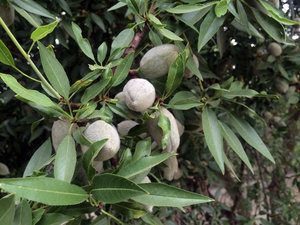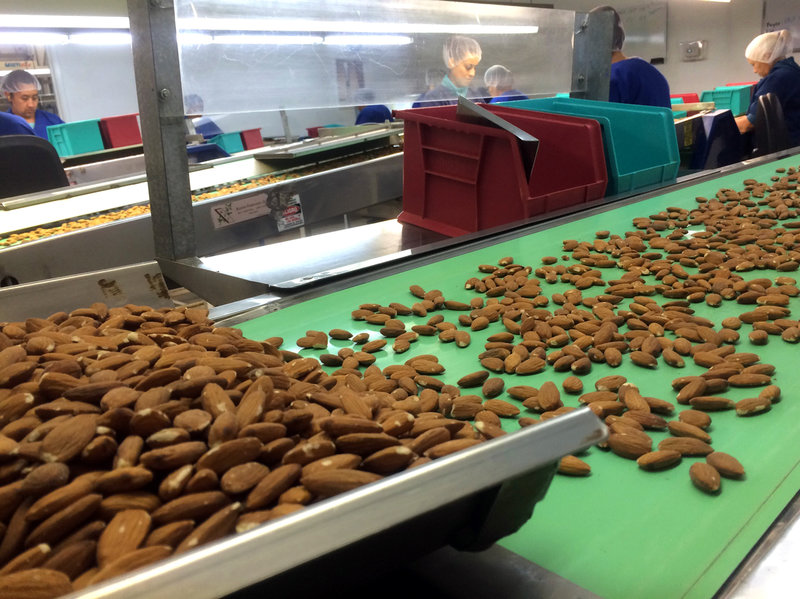Drive anywhere in Central California and you'll find fields of almonds. So many new trees have been planted in recent years that people have begun to wonder whether the growth of the almond industry is unsustainable. It seems like the price of the nut may have met a slippery slope.
It started out with almonds getting a lot of bad press over the last few years. The nut was called out for soaking up too much water, while at the same time farmers were making bank on the tree crop. Meanwhile, the commodity slowly lost value.
Vernon Crowder says the price of the nut per pound has dropped "about 20 percent, maybe just a little bit more, since late 2014." Crowder is part of a Food and Agribusiness Research Advisory Group with Rabobank in Fresno.
That 20 percent equals a loss of around $1.8 billion. Crowder says the problem is too much supply.
"There have been a lot of new almonds planted over the last three years," says Crowder. "And that's probably part of the reason why the crop was a little bigger than we expected this year. And people know there will be more almonds produced this fall as well."

When the price of almonds rose from around $2.50 three years ago to over $4 per pound in 2014, farmers went crazy. Many replaced their lower-priced crops, like grapes or cotton, with fields of almonds. That flooded the market, and the price dropped to around $3 per pound.

